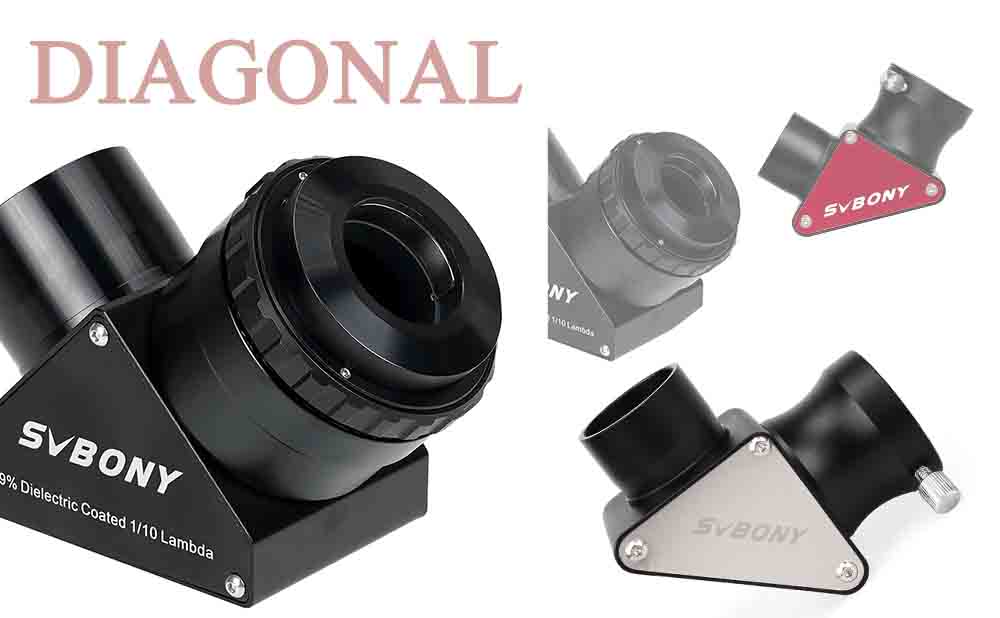Table of Contents

When You buy a Diagonal, Will You Consider These?
When choosing a good diagonal, here are some more detailed features to consider:
Optical System:
Lens quality:
Lens needs to have high-quality glass, while mirrors require smooth reflective surfaces. The quality of these optical elements directly affects image clarity and brightness
Optical coatings: High-quality optical coatings can reduce reflection and scattering, improve light transmission, and enhance contrast and image clarity.
Optical aperture:
A larger optical aperture provides more light-gathering capability, resulting in brighter and more detailed images.
Magnification range:
Some diagonals come with variable-magnification eyepieces, allowing adjustments according to observation requirements.
Design and Stability:
Architecture and stability:
Diagonals should have a sturdy structure and stable platform to prevent vibrations and disturbances during observations.
Adjustability and convenience:
Some diagonals can be adjusted for height, tilt angle, etc. To accommodate the observer's height and preferred observation position.
Ease of operation:
The control and focusing systems of the diagonals should be user-friendly, allowing observers to quickly and accurately locate targets.
Comfort:
Eyepieces and field of view:
Diagonals should be equipped with comfortable eyepieces and adjustable eye relief to accommodate the visual needs of different observers.
Observation position:
The design of the diagonals should consider a comfortable observation position, avoiding discomfort from excessive bending or tilting of the head.
Materials and protection:
Diagonals should be made of durable materials and have features like waterproofing dust resistance, and corrosion resistance to withstand outdoor conditions.


jluviram
he comprado el refractor svbony 102mm 503 y cuando lo monto y coloco los oculares no consigo enfocar, me falta recorrido, como solucionar?. lo compre para visual espero me ayuden ,gracias
svbony Elena
WE will reply you by emails